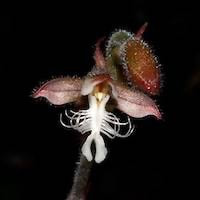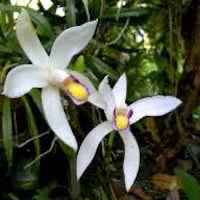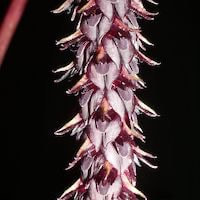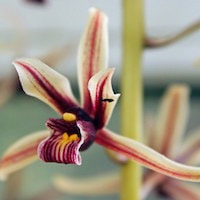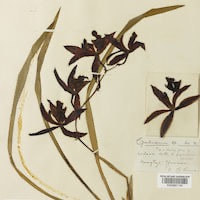MOR7- Men's Oriental 7 - A Dude and A Boss
|
Native Singaporean Orchid notes: Oncidium Cucullatum
Oncidium cucullatum, known as the Violet-Scented Oncidium, is a small orchid found in Colombia and Ecuador, prized for its violet fragrance. It's used in Oriental 7's perfume workshop for team building. Participants learn about the orchid's habitat and scent, then create perfumes using essential oils and collaborate in groups. This activity promotes teamwork, creativity, and appreciation for nature, while raising awareness about orchid conservation and biodiversity.
|
Therapeutic Orchid notes:
|
Anoectochilus reinwardtii Blume
Anoectochilus reinwardtii Blume, known as the Javanese Jewel Orchid, is an epiphytic orchid found in Southeast Asia, including Sumatra, Java, Borneo, and Maluku, at elevations of 1400 to 1700 meters. It's admired for its intricate appearance, earning it the name "Jewel Orchid." Among Borneo's Iban and Kelabit tribes, it holds cultural significance, believed to have magical powers related to fertility. The orchid's ecological role is vital, but habitat loss and over-collection threaten its survival. Conservation efforts are crucial to protect this culturally significant species and its habitat. |
|
Bromheadia finlaysoniana
Bromheadia finlaysoniana, known locally as "Seraman" in Kelabit, "Wi buntak" in Iban, and "Busak paya" in Malay, is an orchid species found in Malaysia and Southeast Asia. It belongs to the Bromheadia genus, which includes 17 species from Sri Lanka to Australia. While B. brevifolia and B. ruprestris thrive in highlands, B. finlaysoniana prefers Malaysian lowlands. This orchid is notable for its unique flowering pattern influenced by bud growth, sometimes blooming abundantly after cool weather. It's also used traditionally in Malaysia for treating rheumatism and asthma, though habitat loss and over-collection pose threats requiring conservation efforts to safeguard its future. |
|
Bulbophyllum cylindraceum
Bulbophyllum cylindraceum, also called the "large bud stone bean orchid," is a unique orchid species found in China, Bhutan, and Nepal, known for its dense dark purple flowers resembling a catkin. In China, it blooms from October to January, and in Bhutan and Nepal during October to January and November respectively. Traditionally, the whole plant is used in treating joint pain and numbness, suggesting potential for alleviating arthritis and neuropathy symptoms. Conservation efforts are critical due to threats like habitat loss and illegal collection, aiming to protect this orchid and others from endangerment. |
|
Cymbidium aloifolium (L.) Sw. Syn. Cymbidium pendulum (Roxb) Sw.
Cymbidium aloifolium, also called Cymbidium pendulum, is an orchid species cherished across Asia under various names like "stripe petal orchid" and "stiff leaf hanging Cymbidium." It contains medicinal compounds like phenanthrenes, including aloifol I and II, which offer anti-inflammatory and pain-relieving properties. In traditional medicine, its leaves are used for treating ailments like eye weakness and paralysis, while its mucilage stops bleeding from leech bites. This orchid holds cultural importance in Asian communities, reflecting the deep connection between nature and traditional healing practices, urging conservation efforts for its preservation. |
|
Cymbidium wilsonii (Rolfe ex De Cock) Rolfe
Cymbidium wilsonii, known as Duanyechutou Lan or Diannanhutou Lan in Chinese, blooms with stunning flowers from February to April and holds cultural and medicinal importance. Its roots are used in traditional Chinese medicine to treat respiratory ailments like coughs, bronchitis, and tonsillitis. The orchid contains aromatic glycosides and lectins, which may contribute to its fragrance and potential medicinal properties, including antiviral effects against viruses like HIV and CMV. Conservation efforts are crucial to protect Cymbidium species and preserve their cultural and ecological significance. |
Other scent note
Scentopia Library Reference ingredient
Grape Seed - Check details at Scentopia's scent library
Download the guided mediation that works best with this Orchid fragrance oil
| men_oriental_essential_oil_orchi_00007.mp3 | |
| File Size: | 111843 kb |
| File Type: | mp3 |

